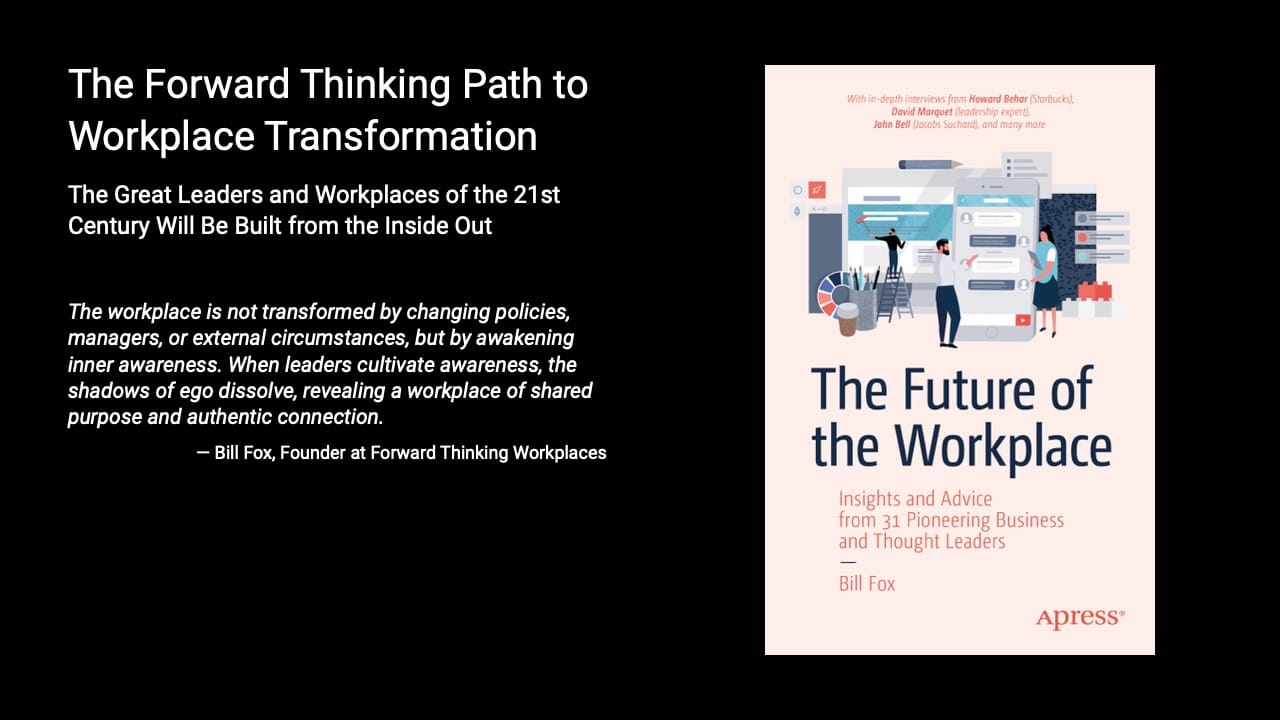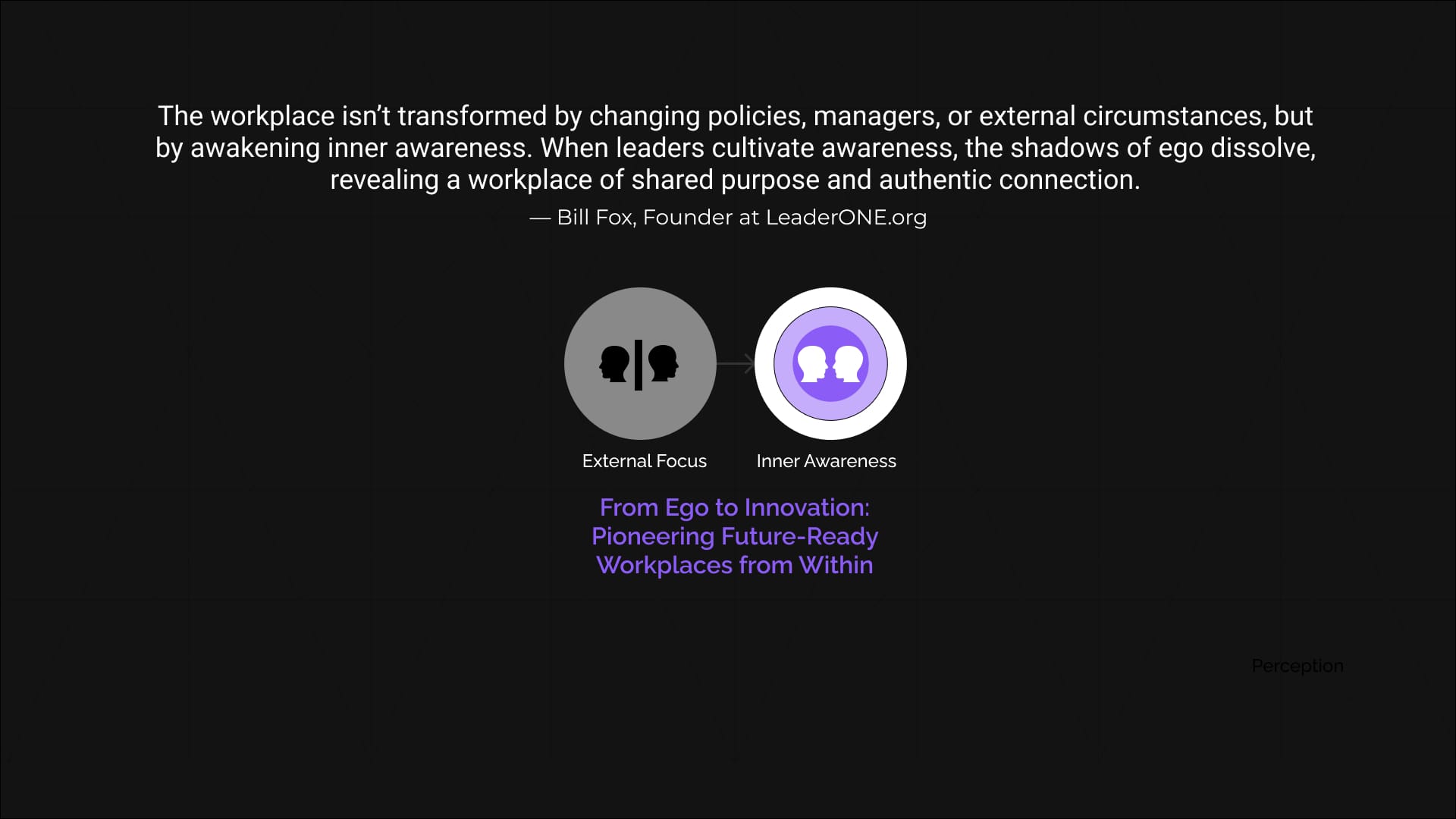5 Inner Shifts to Resolve the Engagement Crisis and End the Great Resignation

People are quick to blame external factors for their organizational challenges. Social media amplifies this tendency, creating an echo chamber of external blame that obscures the real, internal solutions.
They point fingers at leaders, managers, and policies.
This cycle of external blame and ineffective solutions brings to mind Stephen Covey's insightful observation:
"If you want to make minor, incremental changes and improvements, work on practices, behavior or attitude. But if you want to make significant, quantum improvement, work on paradigms."
Covey's words highlight the crux of our workplace challenges. We've been focusing on surface-level changes – tweaking policies, replacing managers, or waiting for market conditions to improve.
These approaches might yield minor, incremental changes at best. However, to address the engagement crisis and stem the tide of resignations, we need a paradigm shift. We need to look inward and transform ourselves to transform our workplaces.
While there's no quick-fix solution, the real transformation doesn't come from changing jobs, managers, or policies. It comes from within.

This perspective turns conventional wisdom on its head. Instead of "People leave managers, not jobs," we might say, "People transform themselves, not jobs."
Through my work at Forward Thinking Workplaces and in collaboration with pioneering business and thouht leaders, I've identified five reasons why inner transformation is the key to workplace evolution. It's hard to believe that we've overlooked these internal factors for so long, but the data doesn't lie.
Engagement data published by Gallup has been consistently showing for decades that only about a third of employees are engaged at work, with this trend remaining stubbornly stable despite numerous external interventions. This persistent "engagement crisis" strongly suggests that we need to look beyond surface-level fixes and address the deeper, internal factors that truly drive workplace satisfaction and performance.
These inner shifts can revitalize the human spirit and breathe new life into an organization. Here's a brief synopsis of each:
- Awareness Precedes Change
When individuals cultivate self-awareness, they become conscious of their reactions, biases, and habitual patterns. This awareness is the first step to any meaningful change. Instead of blaming external circumstances, self-aware individuals take responsibility for their part in workplace dynamics, leading to more constructive behaviors and decisions. - Emotional Intelligence Fosters Collaboration
As people develop their emotional intelligence, they naturally shift from competition to collaboration. They become more attuned to others' needs and perspectives, fostering an environment of mutual support rather than internal rivalry. This creates a workplace where resources are shared, and teams work synergistically. - Mindfulness Cultivates Appreciation
Practicing mindfulness helps individuals focus on the present moment, allowing them to notice and appreciate positive aspects of their work environment. Instead of fixating on what's wrong, mindful employees and leaders naturally balance their perspective, leading to higher job satisfaction and more constructive feedback. - Self-Actualization Replaces Ego-Driven Behaviors
When individuals focus on their personal growth and self-actualization, the need for external validation diminishes. Leaders who are secure in themselves naturally share credit and celebrate team successes. This creates a culture of recognition and mutual support, boosting team morale and performance. - Resilience Overcomes Avoidance
Inner work develops resilience, allowing individuals to face challenges head-on rather than avoiding them. Leaders who cultivate inner strength are present and engaged, even in difficult situations. They see obstacles as opportunities for growth, fostering a culture of courage and innovation.
Embodying the Solution
The shift described above isn't just about changing behaviors, but about a fundamental transformation in consciousness. When individuals at all levels of an organization cultivate inner awareness, they naturally embody the qualities of compassion, clarity, and authentic connection that transform workplace dynamics.
This doesn't mean ignoring practical steps or external factors, but approaching them from a place of heightened consciousness. As organizations and individuals awaken to their true potential, ego-driven behaviors naturally fall away, replaced by a more harmonious and fulfilling work environment.
The primary cause of workplace dissatisfaction is never just the external situation but our inner response to it. Bringing awareness to our internal patterns is the first step in transcending them and creating lasting organizational change.
To your forward-thinking life & great success!
— Bill
Bill Fox, Founder, LeaderONE.org & Forward Thinking Workplaces
Pioneering Leadership from Within | Unlocking Human and Organizational Potential
P. S. Are you ready to lead this inner transformation in your organization? Our inner leader and workplace workshops at LeaderONE.org can guide you on this journey.